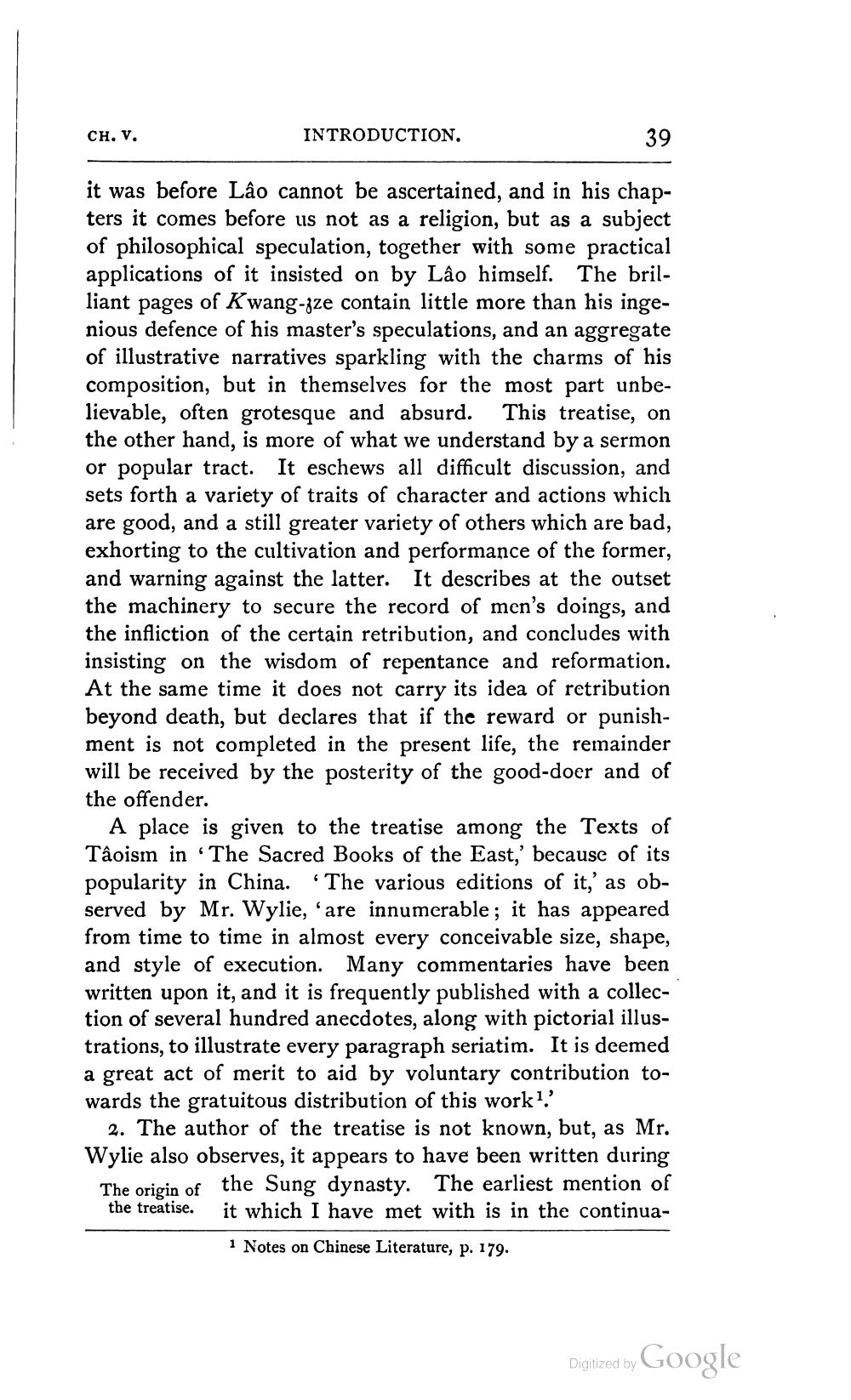________________
CH, V.
INTRODUCTION.
it was before Lâo cannot be ascertained, and in his chapters it comes before us not as a religion, but as a subject of philosophical speculation, together with some practical applications of it insisted on by Lâo himself. The brilliant pages of Kwang-zze contain little more than his ingenious defence of his master's speculations, and an aggregate of illustrative narratives sparkling with the charms of his composition, but in themselves for the most part unbelievable, often grotesque and absurd. This treatise, on the other hand, is more of what we understand by a sermon or popular tract. It eschews all difficult discussion, and sets forth a variety of traits of character and actions which are good, and a still greater variety of others which are bad, exhorting to the cultivation and performance of the former, and warning against the latter. It describes at the outset the machinery to secure the record of men's doings, and the infliction of the certain retribution, and concludes with insisting on the wisdom of repentance and reformation. At the same time it does not carry its idea of retribution beyond death, but declares that if the reward or punishment is not completed in the present life, the remainder will be received by the posterity of the good-doer and of the offender.
A place is given to the treatise among the Texts of Taoism in 'The Sacred Books of the East,' because of its popularity in China. The various editions of it,' as observed by Mr. Wylie, 'are innumerable; it has appeared from time to time in almost every conceivable size, shape, and style of execution. Many commentaries have been written upon it, and it is frequently published with a collection of several hundred anecdotes, along with pictorial illustrations, to illustrate every paragraph seriatim. It is deemed a great act of merit to aid by voluntary contribution towards the gratuitous distribution of this work 1.'
2. The author of the treatise is not known, but, as Mr. Wylie also observes, it appears to have been written during
The origin of the Sung dynasty. The earliest mention of the treatise. it which I have met with is in the continua
1 Notes on Chinese Literature, p. 179.
Digitized by Google




